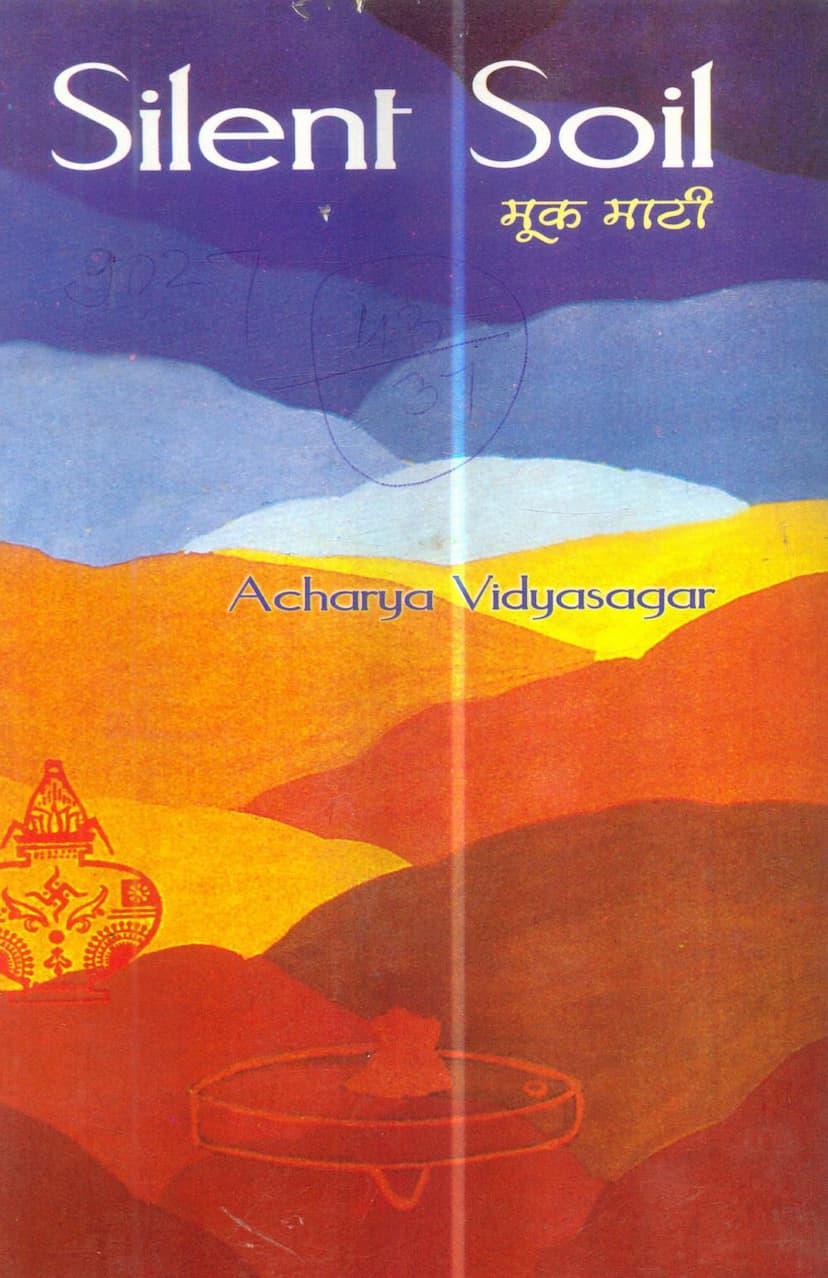Silent Soil
Added to library: September 2, 2025

Summary
This document provides an extensive overview of "Silent Soil" (Mūka Māti), a significant work of modern Hindi poetry by Acharya Vidyasagar. The text is presented as an epic in free verse, lauded for its seamless integration of religious, philosophical, and spiritual themes within contemporary language.
Here's a breakdown of the key aspects covered in the provided pages:
1. Nature of the Work:
- Poetical Brilliance: Acharya Vidyasagar is recognized for elevating the humble "soil" to the status of an epic subject, giving voice to its silent pain and desire for liberation.
- Allegory of the Soul: The transformation of soil into a pitcher through the potter's actions is presented as an allegory for the journey of a bound soul toward liberation, enduring various hardships.
- Inclusion of Modern Themes: The work addresses contemporary issues such as terrorism, capitalist greed, and sensual over-gratification.
- Literary Devices: The text is praised for its figures of speech, narrative pleasantness, dramatic characterizations, and penetrating dialogues, even from seemingly inanimate objects.
- Spiritual Depth: The underlying spiritual sense penetrates the layers of words, offering profound insights.
- Philosophical Exploration: It delves into concepts like the relationship between upadana (material cause) and nimitta (efficient cause), the nature of destiny (niyati) and self-effort (purusartha), and the discrimination between self and non-self.
- Unique Approach: The author's mastery in wordplay, etymology, and uncovering hidden meanings is highlighted, exemplified by the reverse interpretation of words like "rahi" (wayfarer) to "hira" (diamond).
2. Structure and Content (Four Sections): The epic is divided into four main sections, each representing stages of purification and spiritual development:
- Chapter 1: No Hybridism: Obtainment of Caste: This section focuses on the initial purification of the soil, removing impurities like stones to attain its original, pure state. It emphasizes the importance of right company and rejecting negative influences.
- Chapter 2: Words are not understanding: Understanding is not purification: This part explores the difference between mere words, understanding their meaning, and actual purification through experience and conduct. It delves into various literary and philosophical concepts, including the nine rasas (sentiments) and the practical application of existential truths.
- Chapter 3: Nurturing the good: Washing away the evil: This section highlights the creation of merit through pious deeds and righteous conduct, contrasting it with the sins born of anger, pride, deceit, and greed. It uses narratives like the transformation of water into pearls to illustrate the earth's role in bringing about good. The section also touches upon the complexities of societal issues and the importance of ethical behavior.
- Chapter 4: Fire Test: Silver Like Ashes: This final section details the transformation through intense purification, represented by the firing of the pitcher. It emphasizes the role of penance (tapa), overcoming internal and external obstacles, and the ultimate attainment of a pure, liberated state. It showcases the potter's role as an efficient cause and the soil's transformation through various stages, culminating in the acceptance of divine guidance. The latter part of this chapter also introduces dramatic scenarios involving social commentary, moral dilemmas, and the fight against negative forces.
3. Key Themes and Philosophical Concepts:
- Purification and Liberation: The central theme is the soul's journey towards liberation through self-purification, discipline, and adherence to righteous principles.
- Cause and Effect: The interplay of upadana (material cause) and nimitta (efficient cause) is explored in both material and spiritual contexts.
- Self-Reliance and Effort (Purusartha): The importance of individual effort, faith, and unwavering determination is stressed, alongside the understanding of destiny (niyati).
- Discrimination (Self vs. Non-Self): The text emphasizes the need to distinguish between the true self and external, material objects.
- The Nature of True Knowledge: True knowledge is not merely acquired through words but through experience and integration into one's conduct.
- The Power of Faith and Devotion: Faith serves as a guiding force and a crucial element in the spiritual journey.
- The Importance of Right Conduct: The transformation from ignorance and impurity to purity and virtue is achieved through right actions and ethical living.
- Critique of Societal Ills: The work addresses social issues like greed, ego, hypocrisy, and violence, offering philosophical critiques and solutions.
- The Role of the Divine and the Guru: The guidance of enlightened beings and the ultimate reality are presented as essential for spiritual progress.
- The "Silent Soil" as a Metaphor: The soil represents the soul, capable of immense transformation and growth when subjected to the right processes and guidance.
4. The Translator and Publisher: The English translation is by Gyan Chand Biltiwala. The publication is by Bhagwan Rishabhdev Granthmala, Shri Digambar Jain Atishaya Kshetra Mandir Sanghiji, Sanganer, Jaipur. The text also acknowledges the support of the Biltiwala family for bearing the printing costs.
5. Preludes and Endorsements: The initial pages include a "Prelusive" by Nirmal Kasliwal, an "Obeisance to Gyan Guru," and a "Preface" by Gyan Chand Biltiwala, along with a detailed "Prastavana" (Eulogy) by Laxmi Chand Jain of Bhartiya Gyanpeeth. These sections provide context, praise the work's artistic and spiritual merits, and explain its significance. The "Mental Wave" section further elaborates on Jain philosophical principles, particularly concerning cause and effect and the nature of God.
In essence, "Silent Soil" is a profound and multifaceted poetic epic that uses the metaphor of soil transforming into a pitcher to illustrate the Jain path of spiritual purification, self-discovery, and ultimate liberation, interwoven with philosophical depth and social relevance.